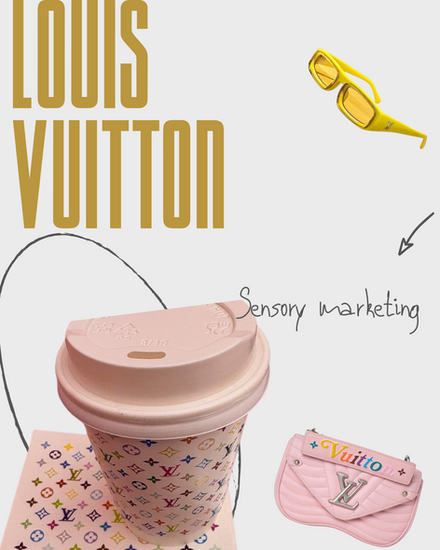Savouring Luxury: How Fashion is Seducing Consumers Through Taste and Café Marketing
- Maheshwari Raj
- Mar 21
- 4 min read

Once, luxury was something you draped over your shoulders, clasped around your wrist, or stepped into with a perfectly sculpted heel. Now, it’s something you sip, taste, and linger over. High fashion has entered the realm of haute cuisine—not as an afterthought, but as an extension of its very essence.
The world’s most revered maisons are no longer just dressing their clientele—they are feeding them, turning fine dining into a sensory gateway into their brand universe. A delicate macaron stamped with a monogram, a perfectly plated omakase course in a flagship store, a sculptural dessert inspired by an atelier’s craftsmanship—this is not just food. It is desire, plated.
But why are brands investing in these ephemeral luxuries? Because the appetite for exclusivity has evolved. The new luxury is no longer just about what you own—it’s about what you experience.
The Rise of Café Marketing: Selling Status, One Latte at a Time
Luxury brands are no longer just crafting handbags and haute couture; they are curating entire lifestyle moments, and café marketing has become a key ingredient in this recipe. The trend, which has taken hold from Paris to Tokyo, taps into a universal truth: food is social currency.
A viral Instagram post by @gradgirlmarketing defines Café Marketing as a strategy where fashion houses create cafés and dessert bars to immerse consumers in their brand’s world, fostering a sense of exclusivity while remaining more accessible than traditional luxury goods. These cafés blend aesthetics, branding, and experience into one highly Instagrammable moment.
Some of the standout players in Café Marketing include:
Coach Café – A cosy, fashion-forward take on the classic coffeehouse.
Louis Vuitton x Murakami – A visually striking pop-up that combines high fashion with art-driven café culture.
Prada Caffè at Harrods – A sleek, pastel dream in the heart of London, offering a taste of refinement.
Jimmy Choo’s Choo Café – A bubblegum-pink wonderland, meticulously designed to be the ultimate Instagram moment.
Why Does Café Marketing Work?
The psychology behind luxury brand cafés is simple yet brilliant:
Attainable Exclusivity – A branded café allows consumers to experience the unattainable in an accessible way. While a Chanel bag may be out of reach, a Chanel latte or dessert? Suddenly, luxury becomes an affordable indulgence, letting customers participate in the brand’s world.
Aesthetic Seduction – These cafés are crafted to be photographed, ensuring that every plate, cup, and tabletop moment contributes to the brand’s mystique. A café visit becomes an event—something to document, share, and subtly flex.
Community & Belonging – Café culture fosters a shared luxury experience, creating a space where fashion lovers can meet, indulge, and feel part of an exclusive, like-minded community.
Physical Meets Digital – These cafés are content goldmines, blurring the lines between IRL (in real life) and URL (digital) experiences. In a time when social media amplifies status, luxury cafés are designed to be devoured both physically and virtually.

The Taste of High Fashion
This convergence of couture and cuisine is not incidental. It is deliberate, strategic, and deeply immersive.
Yves Saint Laurent has transformed its Paris flagship into a temple of taste, where guests indulge in omakase artistry, mirroring the Maison’s meticulous attention to detail.
Louis Vuitton’s Café V, perched on New York’s Fifth Avenue, is a study in elegance, with a menu curated by Michelin-starred chefs—an ode to refinement, one bite at a time.
Tiffany & Co. has taken the dream of Breakfast at Tiffany’s from screen to reality, inviting guests into a powder-blue oasis, where afternoon tea is as much about the setting as the flavours.
These spaces extend the brand beyond the boutique. They are inviting you to step inside—not just to shop, but to live within the brand’s world, if only for an hour.
Why Are Fashion Houses Investing in Culinary Experiences?
Luxury fashion is no longer about objects; it is about immersion. And few experiences are as intimate, as transportive, as a meal.
"Luxury today is about feeling," explains Charlotte Sitbon, co-founder of Balbosté, the Paris-based creative studio transforming luxury brands into edible narratives. "It’s about an experience that stays with you, long after you’ve left the table."

Fashion has long been an art of touch and sight, but food is total immersion—the scent of a just-baked croissant at a Dior café, the cool weight of Baccarat glass in a Prada lounge, the delicate crumble of a Balenciaga tartlet. These moments linger, imprinting themselves into memory and association.
The Market Appetite for Edible Luxury
According to Statista, the luxury food and beverage sector is projected to grow from $194.1 billion in 2024 to $702.69 billion by 2033, highlighting the increasing demand for high-end culinary experiences. As Delish reports, Gen Z perceives food as the new luxury, favouring ephemeral indulgences that reflect taste, refinement, and lifestyle.
A Vogue Business survey further supports this shift, revealing that more than 50% of Gen Z shoppers have purchased luxury food items in the past year, prioritising experiential indulgence over material ownership. This evolving landscape underscores how luxury is no longer confined to fashion and accessories—it is now something to be consumed, shared, and savoured.

Beyond the Plate: The Future of Luxury
Luxury is no longer something you simply own—it is something you momentarily step into, consume, and carry with you.
The rise of fashion’s culinary movement is not a passing trend—it is a redefinition of indulgence, where high fashion seduces not just through the fabric, but through flavour.
As maisons continue to expand their gastronomic footprints—through exclusive cafés, ephemeral pop-ups, and avant-garde food collaborations—one thing is certain:
Luxury is no longer just in your closet. It is on your plate. In your glass. A fleeting, exquisite moment—devoured, savoured, and longed for.







Comments